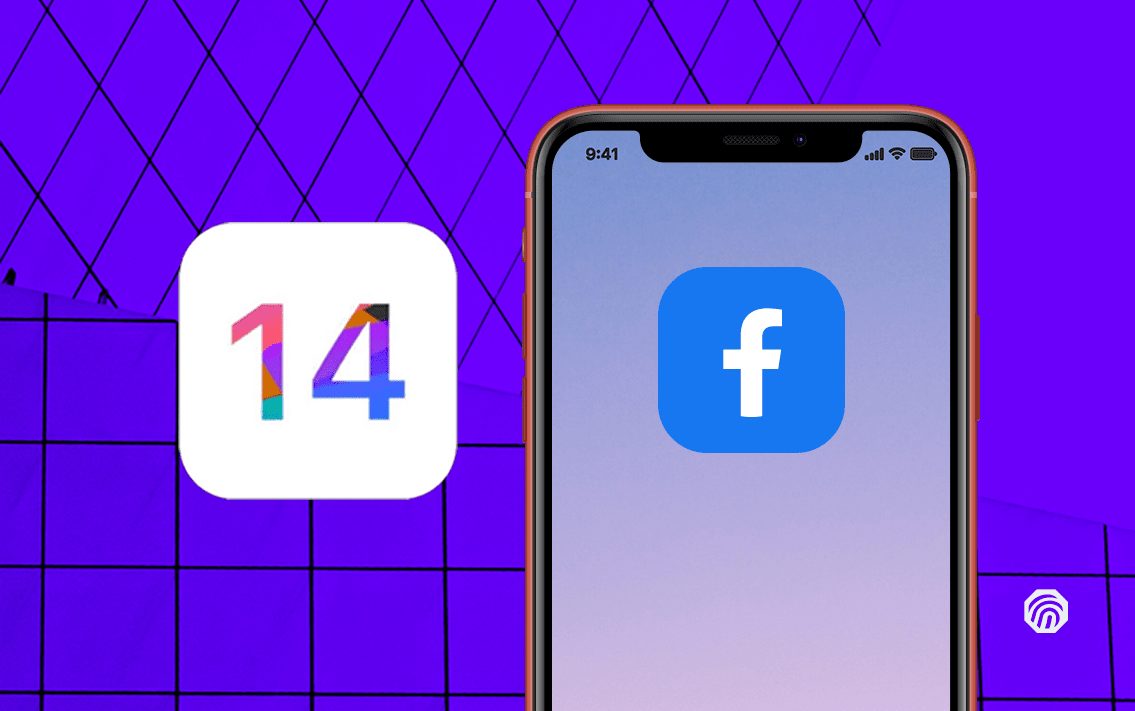Apple announced a major update to its iPhone operating system, iOS 14, in June of 2020 and released it in September. Details about iOS 14 sent ripples through the tech world as Apple and Facebook battled over what the new update would mean for advertisers. Here is what we know and what we advise for small businesses who advertise on Facebook.
What is new with the Apple iOS 14 update?
The major changes focus on how the iPhone displays and organizes apps, for example by automatically sorting them into categories and anticipating which one a user will need at a given time. It also allows for “picture in picture,” essentially the ability to use two apps at once and some new abilities for Siri. Those features might all sound like fun, but one element of the upgrade generated controversy: the updated privacy protections, dubbed AppTrackingTransparency. Facebook claimed that these privacy changes would “change the internet as we know it.”
Apple iOS 14 Privacy Protections
AppTrackingTransparency prompts iPhone users to control what information apps track. For each app on their device, including Facebook and Instagram, iPhone users will be asked to allow or not allow the app to track their activity across apps and websites. It also includes new options for limiting access to select photos or location data. New icons show the iPhone’s home screen show when an app is using a camera or microphone. In its Safari browser, Apple reports which website trackers are being blocked.
App developers and publishers say that the privacy feature will significantly cut into their revenue, since they will not have as much access to monetizable information. Facebook led the outcry with full-page ads in major newspapers in the fall of 2020.
They expressed alarm that the feature would harm small businesses who advertise on their platform, but limiting the advertisers’ ability to fine-tune their audience targeting. Facebook says, “without personalized ads powered by their own data, small businesses could see a cut of over 60% of website sales from ads.”
Facebook has also suggested that Apple stands to benefit from in-app purchases and subscriptions, which businesses will be forced to use in lieu of personalized advertising. Apple argues that the privacy measures simply protect their users.
Privacy feature delayed to 2021… maybe
In September, it was announced that Apple would delay the rollout of the feature until an unspecified* date in 2021. However, some iPhone users reported seeing the tracking prompt in late December of 2020.
Facebook’s Advice to Businesses
As with any change in mobile technology, business owners and advertisers need to keep up and adapt accordingly. Facebook states the following in their Business Help Center:
“Businesses that advertise [on] mobile apps, as well as those that optimize, target, and report on web conversion events from any of our business tools will be affected… As more people opt out of tracking on iOS 14 devices, ads personalization and performance reporting will be limited for both app and web conversion events.”
They suggest the following actions for businesses:
- For conversion events in your app, update to Facebook’s SDK for iOS 14 version 8.1. The update supports some personalization of ads delivered to devices on iOS 14.
- For conversion events on your website, verify your website’s domain to help avoid any future disruption of your website campaigns.
- Create separate iOS 14 app install campaigns due to reporting limitations from Apple’s SKAdNetwork API.
The Facebook Business Help Center provides a wealth of additional information.
ThumbStopper’s Advice
ThumbStopper works closely each day with advertisers from national brands to small, mom-and-pop businesses, so we understand the evolving nature of social media marketing.
Keep two things in mind to maintain some perspective on iOS 14’s impact:
- It’s not yet known how many people will opt out of sharing their information with apps, so the shift may not be as dramatic as Facebook says. Seven out of 10 people say they prefer personalized ads.
- Keep in mind not everyone has an iPhone. Although there are 100 million iPhone users in the U.S., Apple’s market share is on the decline, with a 10% drop from Q3 2019 to Q3 2020.
That being said, you will want to make your social media marketing strategy as efficient as possible to counter any potential loss of targeting ability.
Always Track Performance
If you don’t already, start tracking the performance of your paid social. Once the AppTrackingTransparency takes effect, compare the data. You will learn how much the iOS 14 changes actually affect your efforts, and can make informed decisions about whether to adjust your strategy.
Don’t Neglect Organic Social Media
Organic social media remains a crucial element of digital marketing, and you should always incorporate it into your marketing strategy. When a person makes the choice to follow your business page, they are expressing an interest in your company and they want to hear from you. Post thoughtful, engaging content to your pages on a regular basis. Monitor your analytics to learn what kinds of content your fans like most, and give them more of what they want.
Sign Up for ThumbStopper
The best way to keep social media users engaged with your digital presence is to continuously distribute high quality content. Chances are, the brands you carry produce a wealth of content about the products you carry, including promotions and new product launches. Don’t miss out on the chance to push this valuable content to followers of your business page. It can get you greater exposure, more fans, and better engagement.
Get in touch with ThumbStopper to learn how we can help automate your social media and position your small business for success, whatever trends the tech landscape brings.
*As of this writing, January 2021




